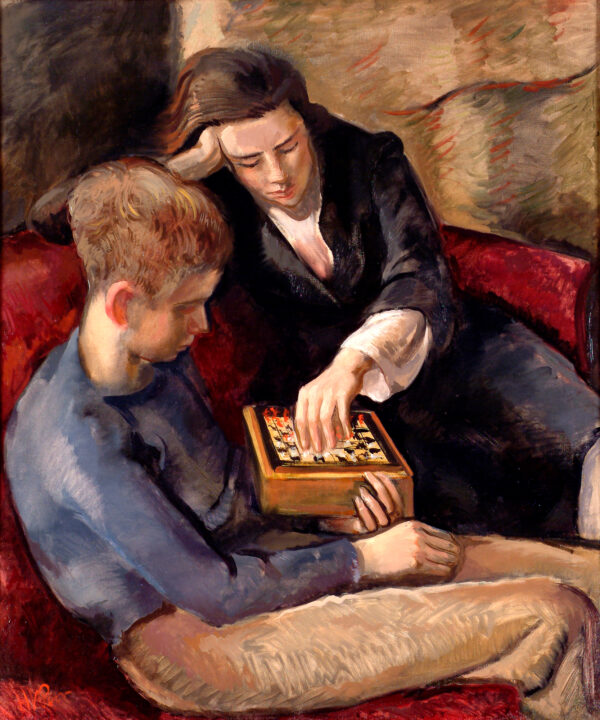
Chess Game, The
Poor, Henry Varnum
1939–40
Artwork Information
-
Title:
Chess Game, The
-
Artist:
Poor, Henry Varnum
-
Artist Bio:
American, 1887–1970
-
Date:
1939–40
-
Medium:
Oil on canvas
-
Dimensions:
36 1/8 x 30 1/4 inches
-
Credit Line:
Wichita Art Museum, Museum purchase with funds donated by Marvin Bastian in memory of his wife, Bobbie Bastian
-
Object Number:
2003.5
-
Display:
Not Currently on Display
About the Artwork
The subject of The Chess Game is the artist’s son, Peter, and stepdaughter, Anne. The Poor family was close, and some of Henry’s finest paintings and ceramics record their familial intimacy. Peter was a relatively quiet and thoughtful child whose youth was marked by a near-fatal case of spinal meningitis. Treatment required immediate departure from London for a special ranch outside Colorado Springs.
Elizabeth Navas was a great admirer of Henry Varnum Poor for reasons much more profound than his Kansas ties. Around 1940 she wrote that “his paintings are some of the finest contemporary work done in America in the last several decades.” She particularly appreciated the way he balanced contemporary subject matter with dedication to the traditional processes of crafting art. In The Chess Game, for example, the layers of glaze (thinly applied transparent paint) are built up with a subtlety that can only be appreciated on close examination. The interwoven strokes and layers of glazes, along with the circular composition, formally link brother and sister. The deftness of Poor’s application of glaze and its apparent delicacy add to the air of intimacy and absorption between the siblings. Peter does not remember who won the game, but suspects it was his sister, because “I never looked more than one move ahead.”